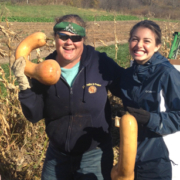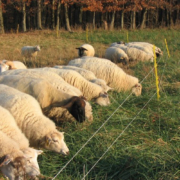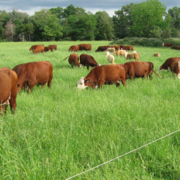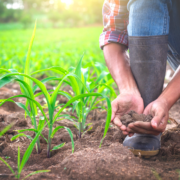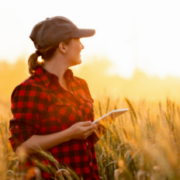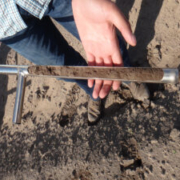Providing Water to Livestock in Frigid Weather
 Print This Post
Print This Post
By Linda Coffey, Margo Hale, and Dave Scott, NCAT Livestock Specialists
With many parts of the country currently experiencing bitter temperatures, we’re re-posting this blog from March 2021 to offer potential livestock-watering strategies for your farm during severe cold snaps.
Weather events bring all sorts of challenges to livestock producers, but perhaps none more than severe winter weather. The bitterly cold temperatures in February 2021 sparked a conversation among NCAT Livestock Specialists about how we provide water to stock during such times. Since spring is still weeks away at best, it seems a good time to share our watering strategies for bitter cold winter days. Hopefully, the ideas presented here will trigger your own ideas to get your farm ready for the next cold spell. Dave Scott raises a large flock of sheep in Montana, and while weather-related water challenges occur every winter, he has found tried-and-true methods that work. Margo Hale, NCAT Southeast Director, lives in Arkansas where mild winters are the rule. Her farm includes cattle, goats, poultry, and hogs. Linda Coffey, also in Arkansas, raises sheep with her husband.
Dave Scott, Montana Highland Lamb and NCAT Rocky Mountain West Office
Water source: well water
This winter, we resorted to a make-do setup for watering our sheep. The main “frost-free hydrant” that permanently supplies the water-supply main line froze up last October because I did not winterize it soon enough. In Montana, if you are not ready for winter, you are nearly always punished. The hydrant is toast for the season.
So, we put a “shoo fly” water line in from another hydrant (see picture below left). We winterized it as we should have the downed hydrant, with a wool bale sack filled with about 30 pounds of blackface wool worth about $0.20 per pound (isn’t that awful?). Then we strung out about 200 feet of ¾-inch black poly pipe to the main water line, which is above ground (see photo below).

Winterized hydrant. Photo: Dave Scott, NCAT
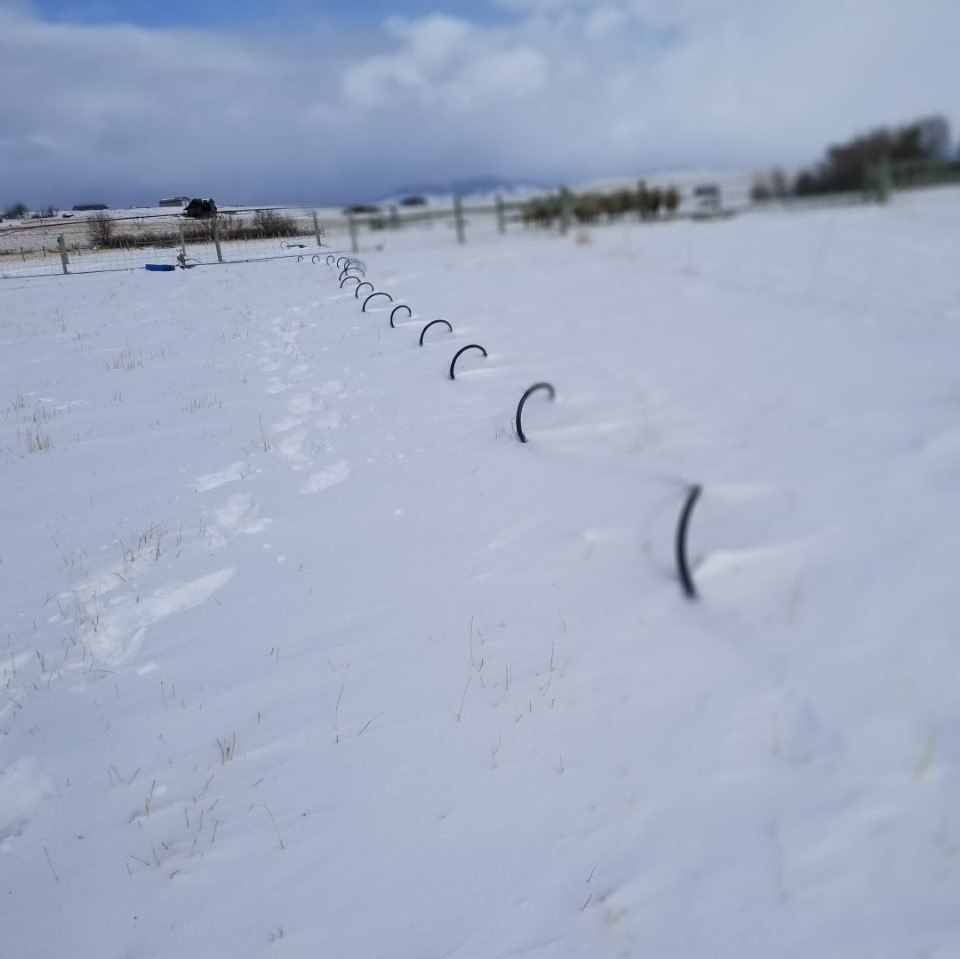
Shoo-fly pipeline made with ¾ inch black poly pipe. Photo: Dave Scott
Here is an ATTRA video describing the overall grazing water system.
Photo 3 shows the waterer itself, made from a plastic, 55-gallon dairy soap barrel cut in half, with a commercial flow valve installed. The float never worked, so I don’t bother with it anymore. Just FYI, don’t use floats in the winter—the whole system will freeze because the water is not flowing when the float shuts off.

Livestock waterer made from a 55-gallon barrel. Photo: Dave Scott
The waterer is hooked up to the main line with a hose bib valve and a short piece of garden hose. You can kind of see this in the photo.
All you have to do is turn on the hydrant full blast and then go to where your waterer is and turn on that valve so that about one-half gallon per minute is coming out of the waterer when it is full. It is easy to judge if you drill some 1-inch holes in the top of the waterer as shown.
The whole trick is to keep the water flowing. One-half gpm seems to work very well. This waterer provided frost-free water for the cull ewes on pasture this past week with wind chill temperatures in the 30-below-and-worse range. It does not make that much of a mess and all of the water eventually cycles back to where it came from—the well.
Instead of a hydrant, you can hook it up to your barn hose bib—just keep the water flowing! One nice thing about it is that it requires no electric heaters that go bad just when the weather is the coldest!
Margo Hale, Farm of Hale and NCAT Southeast Office Director
Water source: city water and rainwater
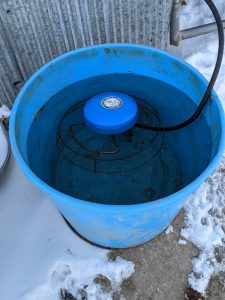
A tank heater keeps water ice-free for the goats. Photo: Margo Hale
Our winters are generally very mild. While it may get into the teens or 20s at night, daytime temperatures are usually in the 40s. Several of our water tubs are black, which absorb heat/sunlight and help keep things from freezing. So, our waterers don’t usually freeze. If something freezes overnight, it will quickly melt in the day. You can refer to our waterers shown in the Infrastructure and Equipment blog (linked below). We usually use them all winter long with no problems.
This winter, though, it had been forecasted that we were going to have a week or more of very cold temperatures, never getting above freezing, negative temperatures, wind-chill advisories, etc., so we started preparing. We unhooked hoses, unhooked waterers, and drained the barrels that hold water. We also bought some heated buckets. We moved the pregnant goats that were expected to kid during the cold snap to the barn. There we could provide extra warmth for any newborn kids and ice-free water for the does, thanks to the tank heater. Unfortunately, because all of our hoses were frozen, I had to haul water a bucket at a time from the frost-free hydrant to fill the tub. Fortunately, they don’t seem to need much water. I’ve seen them eating snow, and maybe that is why.
We have a group of doelings in another pasture and we put a heated bucket there. We also have a heated chicken waterer in the chicken coop. Both of those need to be filled up once or sometimes twice a day, and that has worked great. Again, I haul the water a bucket at a time from the frost-free hydrant.
Our cows drink from our pond. While it usually is a trouble-free water source, it froze solid! So we have been chopping ice a couple of times a day so the cows can access water. With the help of electricity and a bit of extra work, we managed. We are thankful that spring is coming!

Heated poultry waterer and heated bucket. Photo: Margo Hale
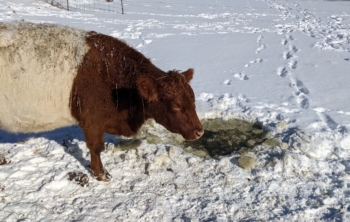
This frozen pond needed to be chopped daily during a severe cold snap. Photo: Margo Hale
Linda Coffey, Maple Gorge Farm and NCAT Southeast Office
Water source: rainwater
The way we water our sheep begins with rainwater collection off the barn. We have two tanks, for a total of 6,000 gallons capacity. These were sized taking into account rainfall patterns and water requirements for our stock so that we do not run out. The tanks are linked together with PVC pipe and then plumbed to a frost-free hydrant nearby. That is where we have a 50-gallon watering trough for the sheep, and it is fenced across the tank so that two groups can water from the same tank.
On the back 40, we haul water in two 55-gallon barrels that are outfitted with valves. We haul them on the back of the pickup or we can use straps and the scoop of the tractor. The water tanks back there are portable and we check every day but won’t need to refill that often—perhaps two or three times a week. Sheep supposedly drink a gallon a day, but that varies with the vegetation, dew, weather conditions, and stage of production. During the cold spell, we hooked up a stock tank heater at the barn and moved all the sheep home. We fill the water trough twice a day to be sure the heater is in the water and the tank is fairly full. This is easy to do because the hydrant is beside the water trough and only a short hose is needed to reach the trough. Once the weather warms up, we will unhook that heater.
There you have it: a few solutions for cold weather watering of livestock. Spring is coming soon, but next winter, we resolve to be ready! Winterize the frost-free hydrants, be sure to drain hoses every single day, and figure out some ways that will work on YOUR farm. Contact us at askanag@ncat.org to tell us your tips or ask questions.
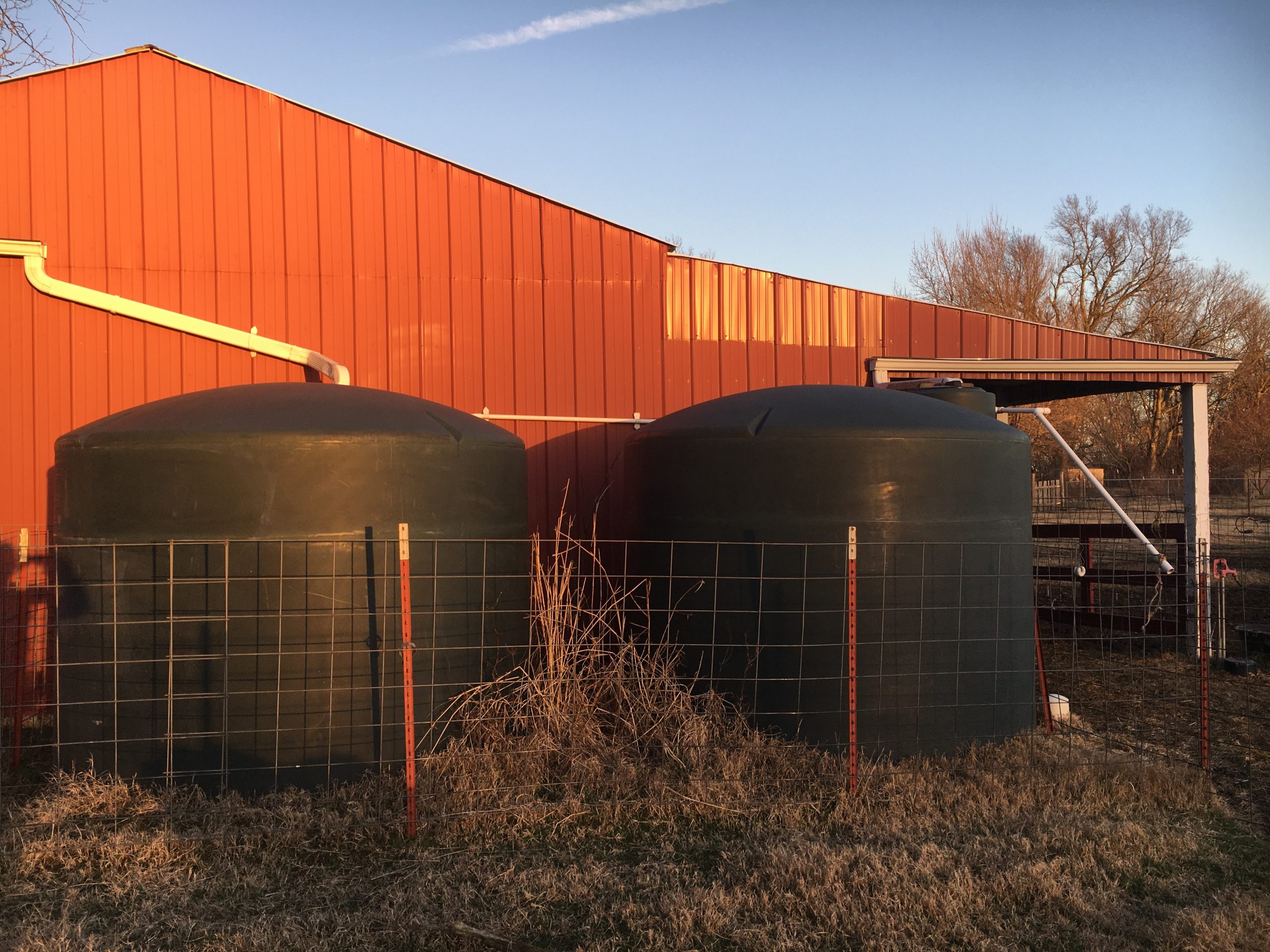
Rainwater collection tanks at Maple Gorge Farm. Photo: Linda Coffey

Water trough and frost-free hydrant. Photo: Linda Coffey
Related Resources:
Farm Equipment and Infrastructure
Learn more about the infrastructure and equipment on Margo Hale’s farm in this ATTRA blog.
Missouri Watering Systems for Serious Graziers.
By Natural Resources Conservation Service (NRCS)
This 40-page document is loaded with information and excellent illustrations and photos and lays out options for providing water to livestock, primarily cattle. While it was written for Missouri, the information is valuable for anyone interested in setting up a watering system.
This blog is produced by the National Center for Appropriate Technology through the ATTRA Sustainable Agriculture program, under a cooperative agreement with USDA Rural Development. ATTRA.NCAT.ORG.



